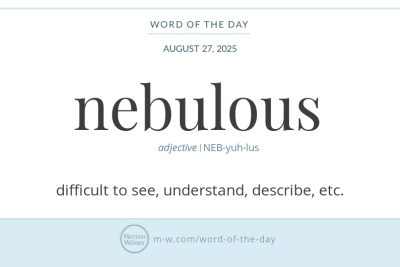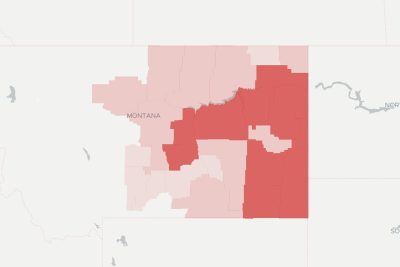
Congressional Democracy: Definition, History, and Key Facts

The concept of congressional democracy signifies a system of governance where elected representatives play a crucial role in the legislative process, shaping policies and laws for the citizens they represent. Rooted in the ideals of democracy representation, this model empowers voters to choose officials who, in turn, are tasked with making informed decisions on their behalf. As societies evolve, the essence of democracy representative has been pivotal in the development of modern governance structures, particularly in nations where the voice of the people is paramount.
Throughout history, the principles underlying congressional democracy have served as the backbone for various forms of government around the globe. Defined by a system where representatives are held accountable to their constituents, it stands in contrast to direct democracy, which necessitates active citizen participation in decision-making processes. By delving into the historical background, key features, and contemporary challenges of congressional democracy, this article aims to provide a comprehensive understanding of its significance and implications for societies today.
- Definition of Congressional Democracy
- Historical Background of Congressional Democracy
- Key Features of Congressional Democracy
- The Role of Representatives in a Congressional System
- Differences Between Congressional and Direct Democracy
- Notable Examples of Congressional Democracy Worldwide
- The Evolution of Congressional Democracy Over Time
- Challenges Facing Congressional Democracy Today
- Conclusion: The Future of Congressional Democracy
Definition of Congressional Democracy
Congressional democracy is a term used to describe a legislative system within a representative framework where elected officials, known as members of congress, are responsible for enacting laws and policies. This model is grounded in the democratic principle that citizens should have a say in their governance through the election of their representatives. In such a system, these elected officials form a congress, which often consists of two houses: typically a lower house and an upper house, mirroring the structures seen in countries like the United States.
The role of democracy representation is fundamental in this system, as it ensures that diverse viewpoints within the populace are considered. By electing representatives, citizens delegate legislative powers while retaining the ability to influence legislation through electoral processes and public opinion. The interplay between representatives and their constituents is essential, enabling responsive governance that can adapt to the changing needs of society.
Historical Background of Congressional Democracy
The origins of congressional democracy can be traced back to the ancient ideals of representative governance established during the Roman Republic and further developed through the Enlightenment. Philosophers like John Locke and Montesquieu advocated for systems that balanced power among branches of government, highlighting the importance of representation in safeguarding liberty. The democracy representation movement gained momentum in the 18th and 19th centuries, with various countries adopting representative institutions.
One notable historical milestone occurred during the American Revolution, leading to the establishment of the United States Congress as a model of congressional democracy in practice. The framers of the U.S. Constitution created a bicameral system composed of the House of Representatives and the Senate, allowing for comprehensive legislative debate while representing the interests of both populous states and smaller regions. Other nations adopted similar structures, tailoring them to their unique needs and contexts, thereby creating a global landscape of democracy representation.
Key Features of Congressional Democracy
- Bicameral Legislature: Many congressional democracies feature a bicameral legislative system, which provides checks and balances within the law-making process.
- Regular Elections: Citizens participate in regular, free, and fair elections, ensuring representatives are accountable to their constituents.
- Separation of Powers: The division of government into branches (executive, legislative, and judicial) is crucial for maintaining checks and balances.
- Constitutional Framework: A written constitution outlines the roles, powers, and responsibilities of each branch of government, as well as the rights of citizens.
- Political Pluralism: Diverse political parties and platforms exist to ensure a range of ideas and perspectives are represented within the legislative body.
The Role of Representatives in a Congressional System
In a congressional democracy, the role of elected representatives is multifaceted. They not only draft and vote on legislation but also serve as liaisons between the government and their constituents. This representative function is critical because it allows citizens to communicate their needs and concerns while ensuring that their voices are heard in the legislative process.
Moreover, representatives are expected to uphold the principles of democracy representation by advocating for the interests of those they represent, which may involve balancing local concerns with national priorities. Their ability to engage in public discourse and facilitate discussions on pressing issues underscores the importance of their role in maintaining a responsive and accountable governance system.
Differences Between Congressional and Direct Democracy
The distinction between congressional democracy and direct democracy lies primarily in the level of citizen involvement in the legislative process. In a direct democracy, citizens participate actively in making decisions on laws, often through referendums or initiatives. This model is seen in some small communities or specific situations where voter participation is manageable.
Conversely, congressional democracy relies on elected representatives to make decisions on behalf of the populace. This system is particularly beneficial in large, complex societies where direct participation of all citizens in legislative processes is impractical. By entrusting representatives with legislative responsibilities, citizens can focus on other aspects of civic life while still having a voice in their government through the electoral process.
Notable Examples of Congressional Democracy Worldwide
Several countries embody the principles of congressional democracy within their governance structures. For instance, the United States, as a prominent example, features a bicameral legislature consisting of the House of Representatives and the Senate. This structure enables a balance of power and comprehensive representation of diverse American interests.
Other notable examples include Canada, where the Parliament features the House of Commons and the Senate, and Australia, which also has a bicameral legislature. In addition, nations like India and Germany have implemented similar systems tailored to their unique cultural and political landscapes, underlining the versatility of democracy representation in varied contexts.
The Evolution of Congressional Democracy Over Time
The concept of congressional democracy has evolved considerably from its origins. Historically characterized by limited suffrage and representation, many countries have since expanded electoral rights, leading to more inclusive forms of governance. Innovations in communication and technology have also transformed how representatives engage with their constituents, fostering greater transparency and accountability.
Furthermore, the rise of social movements advocating for civil rights and equality has influenced the evolution of democracy representation by pushing for enhanced participation from marginalized groups. As societies continue to change, congressional systems must adapt to meet the demands of an increasingly diverse electorate, thereby ensuring that all voices are represented.
Challenges Facing Congressional Democracy Today
Despite the strengths of congressional democracy, it faces significant challenges in the modern era. Issues such as polarization, influence from special interest groups, and the impact of misinformation can undermine effective governance and the democratic process. Moreover, the growing disconnect between representatives and their constituents can lead to apathy and decreased voter turnout, threatening the legitimacy of the system.
Additionally, the advent of digital technology has transformed political campaigning and public discourse, often favoring sensationalism over substantive debate. This shift poses a challenge for democracy representation, as representatives may be incentivized to prioritize popularity over policy, compromising their accountability and responsiveness to constituents' needs.
Conclusion: The Future of Congressional Democracy
The future of congressional democracy hinges on its ability to address contemporary challenges while remaining true to its foundational principles. As societies become increasingly diverse and interconnected, the demand for authentic democracy representation will continue to grow. To adapt, representatives must be proactive in engaging with their constituents, fostering dialogue, and prioritizing transparency and accountability in their actions.
Ultimately, by embracing these principles and mechanisms, congressional democracy can continue to evolve, ensuring that the voices of all citizens are heard and respected within the legislative process. By reinforcing its commitment to democracy representative, nations can strive toward a future where governance truly reflects the will of the people.
Did you find this article helpful? Congressional Democracy: Definition, History, and Key Facts See more here Education.
Leave a Reply






Related posts